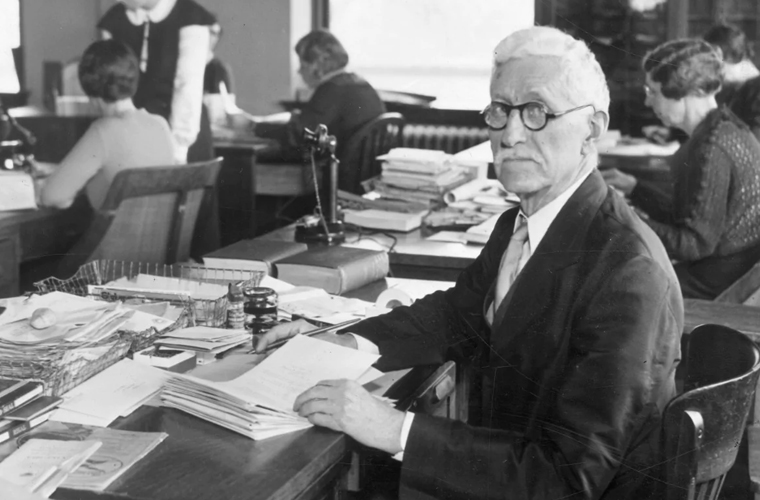Virginia’s Indian tribes have faced numerous obstacles in their decades-old quest for federal recognition. But one person has long stood in their way — and he’s been dead for 68 years.
Walter Plecker — a physician, eugenicist, and avowed white supremacist — ran Virginia’s Bureau of Vital Statistics with single-minded resolve over 34 years in the first half of the 20th century.
Though he died in 1947, Plecker’s shadow still lingers over the state, a vestige of a vicious era when racist practices were an integral part of government policy and Virginia officials ruthlessly enforced laws created to protect what they considered a master white race.
For Virginia’s Indians, the policies championed by Plecker threatened their very existence, nearly wiping out the tribes who greeted the country’s first English settlers and who claim Pocahontas as an ancestor. This month, the legacy of those laws could again help sabotage an effort by the Pamunkey people to become the state’s first federally recognized tribe.
Obsessed with the idea of white superiority, Plecker championed legislation that would codify the idea that people with one drop of “Negro” blood could not be classified as white. His efforts led the Virginia legislature to pass the Racial Integrity Act of 1924, a law that criminalized interracial marriage and also required that every birth in the state be recorded by race with the only options being “White” and “Colored.”
Plecker was proud of the law and his role in creating it. It was, he said, “the most perfect expression of the white ideal, and the most important eugenical effort that has been made in 4,000 years.”
The act didn’t just make blacks in Virginia second-class citizens — it also erased any acknowledgment of Indians, whom Plecker claimed no longer truly existed in the commonwealth. With a stroke of a pen, Virginia was on a path to eliminating the identity of the Pamunkey, the Mattaponi, the Chickahominy, the Monacan, the Rappahannock, the Nansemond, and the rest of Virginia’s tribes.
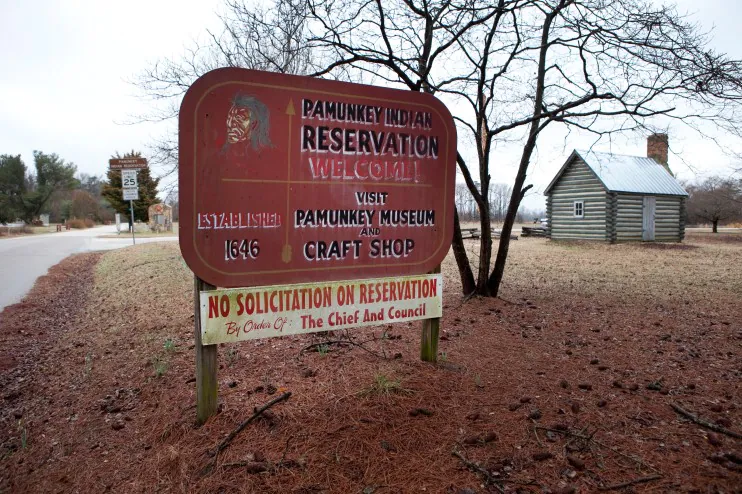 Entering the Pamunkey reservation is a sign announcing the tribe. The tribe is the smallest and oldest documented tribe in Virginia.
Entering the Pamunkey reservation is a sign announcing the tribe. The tribe is the smallest and oldest documented tribe in Virginia.
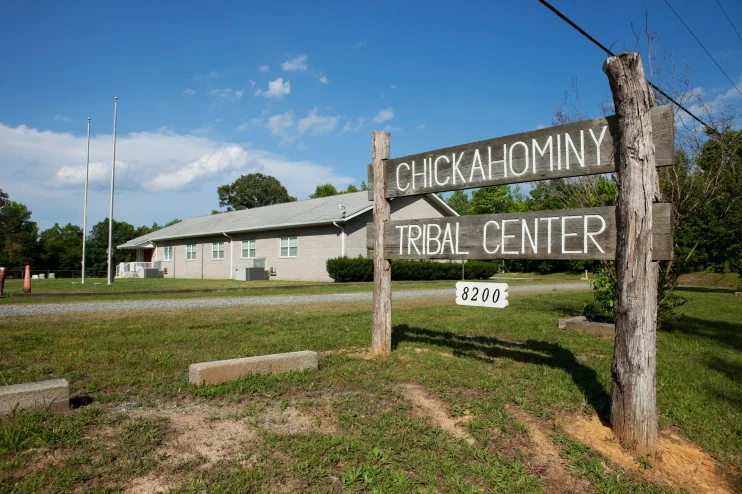 The tribal center for the Chickahominy tribe is located deep in the countryside of rural Virginia not far from the small town of Providence Forge.
The tribal center for the Chickahominy tribe is located deep in the countryside of rural Virginia not far from the small town of Providence Forge.
“He told us we had no right to exist as people,” said Powhatan Red Cloud-Owen, a Vietnam veteran who belongs to the 850-member Chickahominy tribe. “He tried to destroy a people like Hitler did. It was a genocide inside of this great country of ours.”
‘It was devastating’
Plecker. For Virginia Indians, the name is an expletive.
“I would call him the villain in our sacred story,” says Karenne Wood, 55, a member of the Monacan, the largest of the Virginia tribes with more than 2,000 members. “As soon as you raise his name, people make bad faces.”
Standing in the graveyard adjacent to the Chickahominy Tribal Center, Steve Adkins, the 69-year-old chief of the tribe in Providence Forge, about 20 miles southeast of Richmond, says he is pained by what his people endured as a result of the Racial Integrity Act.
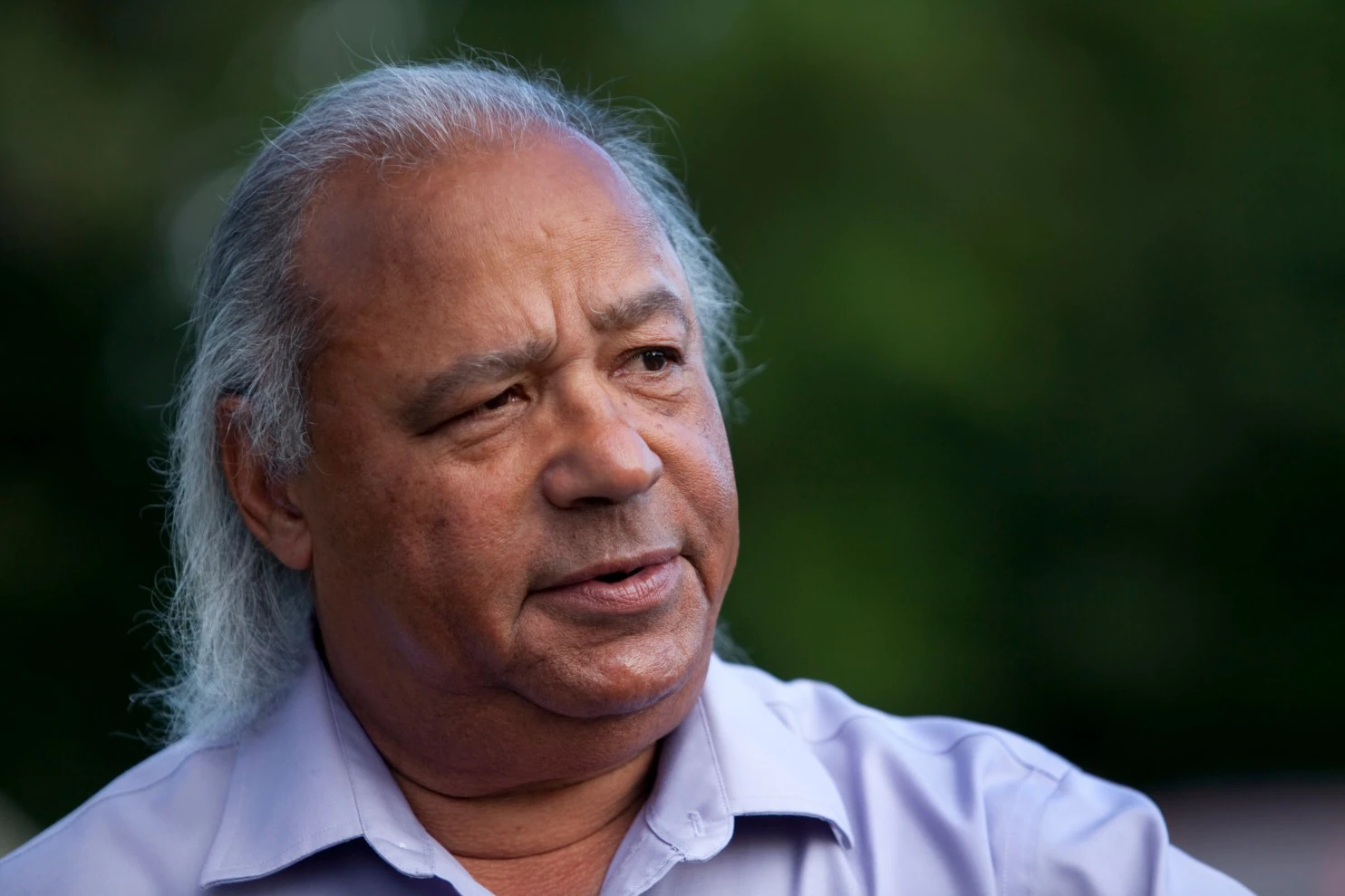
Chickahominy Indian Chief Steve Adkins speaks about the impact of Walter Plecker on the lives of Virginia’s Chickahominy tribe and Virginia Native Americans. (Timothy C. Wright/For the Washington Post)
“It forbade giving your child an Indian name,” Adkins says. “And it caused people like my mom and dad to have to go to Washington, D.C., to be married as Indians.”
Others simply left Virginia rather than stay where they could no longer call themselves Indians.
“It caused separations of families,” Adkins says. “It was devastating.”
The devastation lasted decades. Plecker directed registrars around the state to change birth certificates, to cross out Indian, and write in “Colored.” He had Indian children removed from white schools and Indian patients removed from white hospitals. He pushed back against Native Americans who tried to maintain their tribal identity, and he rejected federal efforts to acknowledge the existence of Indians in the state.
“Plecker saw Indian identity as dangerous because he believed it would simply be used as a way station by people who ultimately just wanted to be classified as white,” says Mikaela Adams, assistant professor of Native American history at the University of Mississippi. “Of course, there were many reasons that white classification in 20th century Virginia was extremely beneficial. It meant access to better schools, homes. It meant, essentially, freedom.”
Instead, Indians lost freedoms and very nearly lost their identity. That was Plecker’s goal, as he explained in a 1943 letter that he addressed to “Local Registrars, Clerks, Legislators, and others responsible for, and interested in, the prevention of racial intermixture.”
“Public records in the office of the Bureau of Vital Statistics, and in the State Library, indicate that there does not exist today a descendant of the Virginia ancestors claiming to be an Indian who is unmixed with negro blood,” he wrote. In other words, Virginia was rid of Indians.
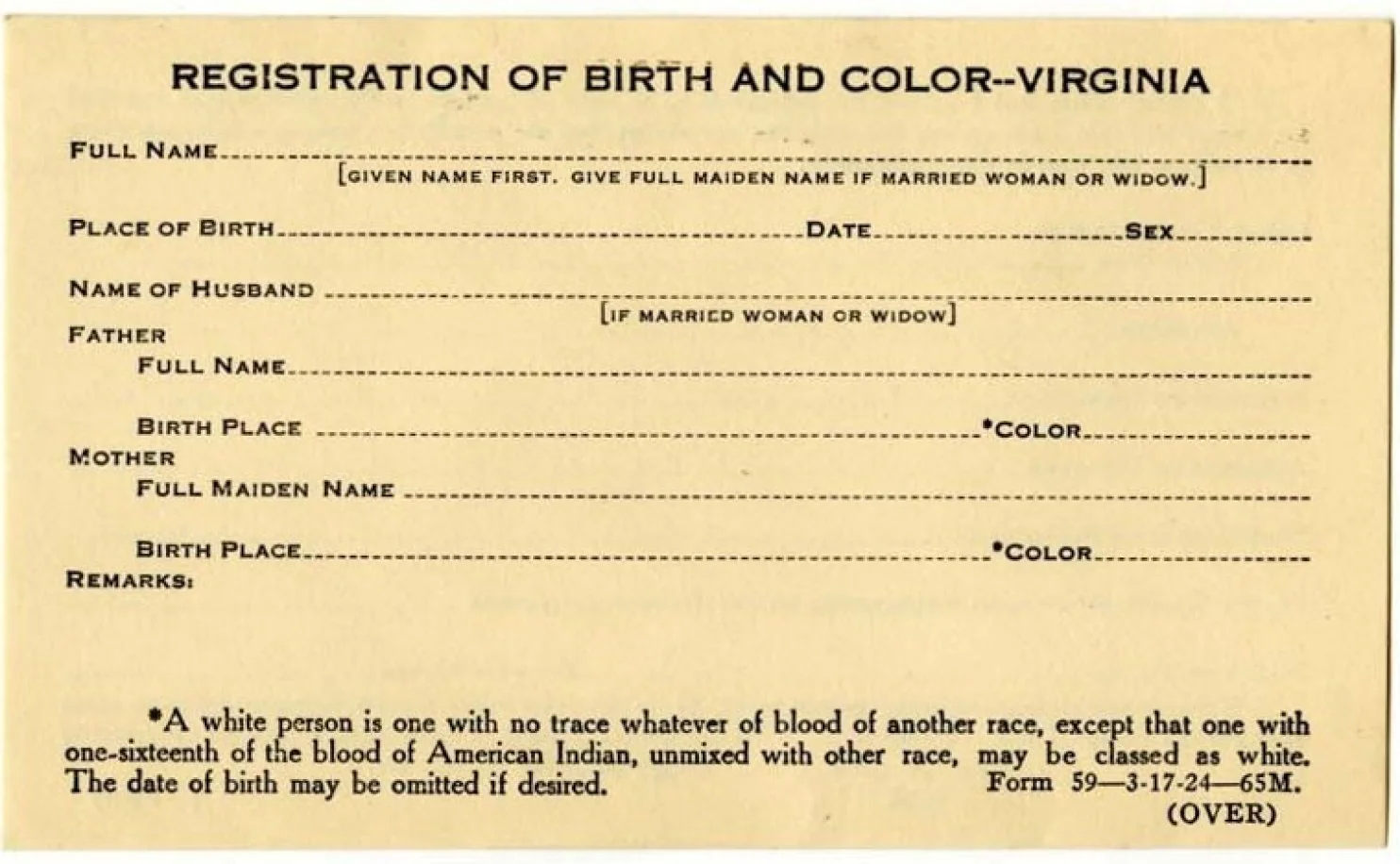
Registration of birth and color record for children in Virginia used during Plecker’s term as the first registrar of Virginia’s Bureau of Vital Statistics. It required a strict definition of race that eliminated the category of Native American. This was part of the Racial Integrity Act of 1924. (Library of Virginia)
Virginia would eventually repudiate the Racial Integrity Act. The law was effectively canceled out in 1967 when the Supreme Court ruled in favor of an interracial Virginia couple’s right to marry in Loving v. Virginia. And in 2002, then-Gov. Mark Warner (D) officially apologized for the commonwealth’s role. But some of the damage has been irreparable.
“Plecker participated in an official disappearance of these tribes,” says Sen. Tim Kaine (D-Va.). “So he might be discredited and the official policy might be to apologize for him, but since the tribes haven’t been recognized, he still has accomplished something that has not been reversed. He’s still winning.”
‘Undesirables born amongst us’
Walter Ashby Plecker was born into a prosperous slave-owning Virginia family on April 2, 1861, just 10 days before the onset of the Civil War. His father joined the Confederate Army in the South’s fight to preserve slavery.
After graduating in 1880 from Hoover Military Academy in Staunton, Va., Plecker attended the University of Maryland Medical School where he earned his medical degree in 1885. He worked as a public health doctor in Virginia and Alabama before being appointed registrar of Virginia’s Bureau of Vital Statistics in 1912. The seeming functionary title was misleading. It was in that office that Plecker would implement some of the most unapologetically racist government policies of the past century.
At the time, eugenics, a pseudo-scientific philosophy espousing racial purity and white genetic superiority, was gaining favor in parts of the United States, not just as a privately held view, but as a matter of public policy. Virginia was a stronghold of this nascent eugenicist movement.
Plecker was an early member of the Anglo-Saxon Clubs of America, an organization founded in Richmond by two white supremacists that pushed for laws that forbid interracial marriage and opposed immigration by anyone other than Northern European whites.
For Plecker, who married but had no children, there was nothing lower than a mixed-race child. “The worst forms of undesirables born amongst us are those whose parents are of different races,” he said.
The Racial Integrity Act was just one pillar in the legislative legacy that Plecker and the eugenicists created. They also lobbied for the Eugenical Sterilization Act that was signed into law in 1924. That allowed the state to sterilize individuals “afflicted with hereditary forms of insanity that are recurrent, idiocy, imbecility, feeble-mindedness or epilepsy.” That law was not repealed until 1974. In February, the Virginia General Assembly agreed to compensate those who were forcibly sterilized, paying each $25,000.
Plecker’s impact was also felt well beyond Virginia. He lobbied the Census Bureau beginning in 1930 to stop using the category “mulatto” to count mixed-race citizens. Indicating that you were of more than one race was not allowed until the 2000 census.
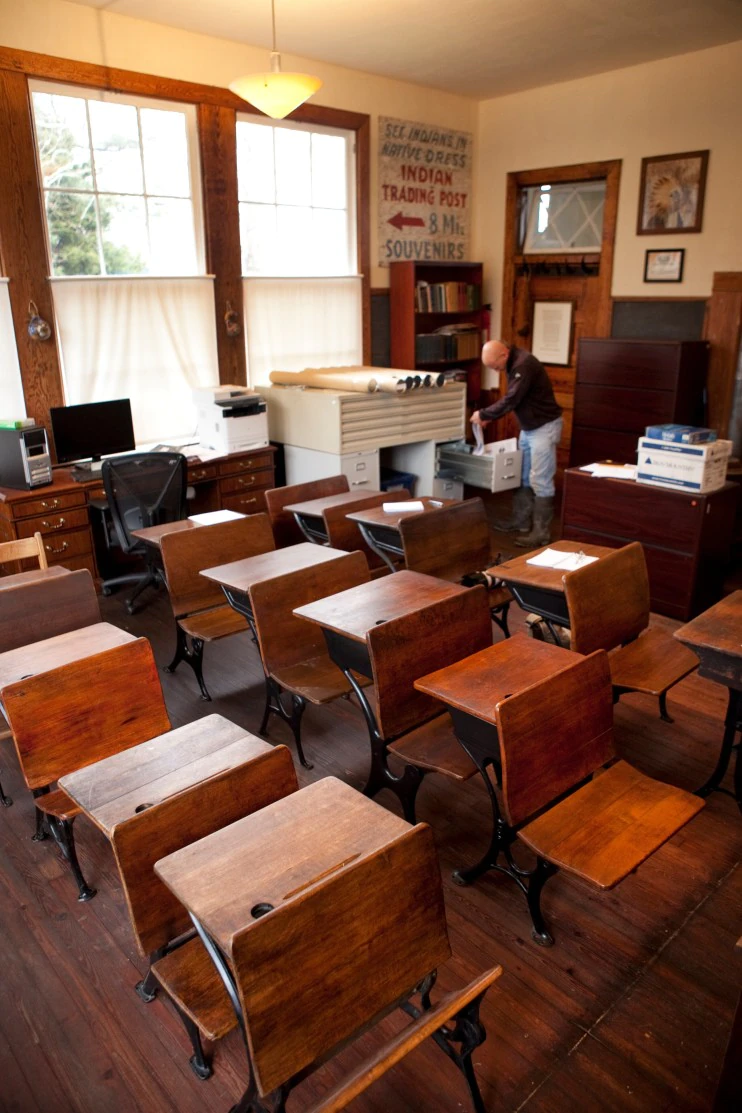 Pamunkey Chief Kevin Brown goes over documents collected from England being used to prove the existence of the tribe to federal officials in Washington.
Pamunkey Chief Kevin Brown goes over documents collected from England being used to prove the existence of the tribe to federal officials in Washington.
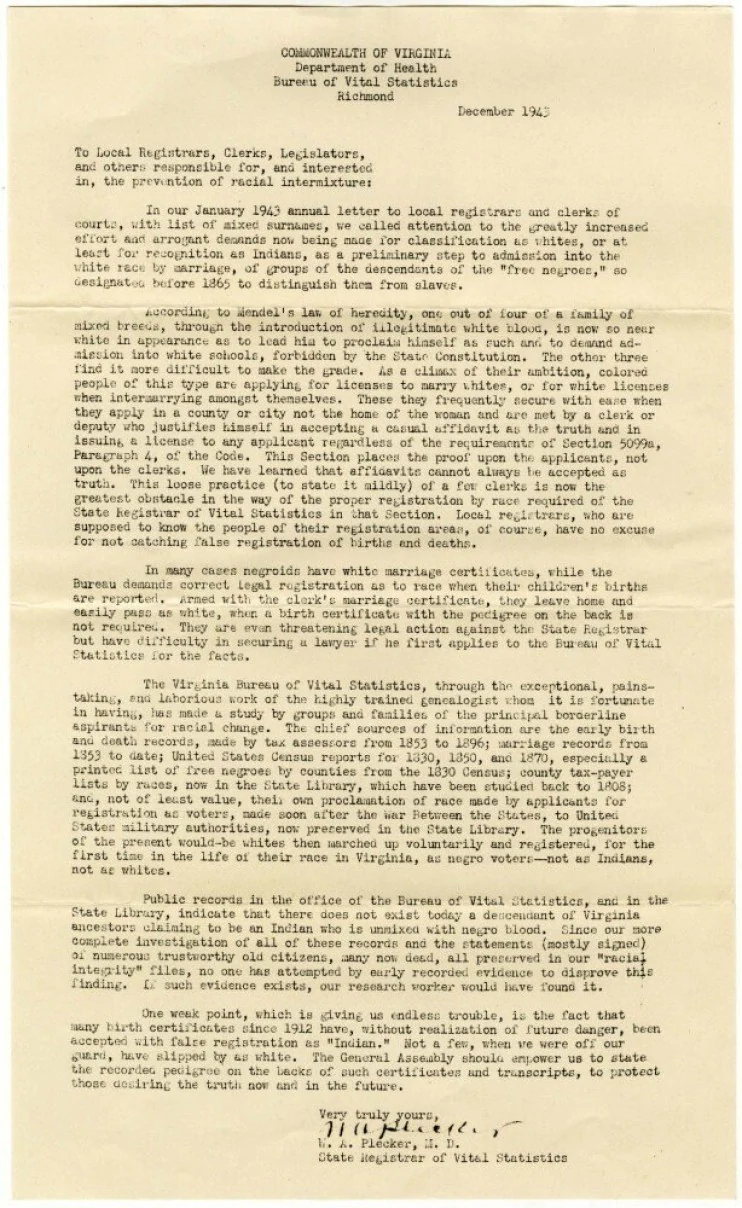 Walter Plecker sent this letter in December 1943 to reinforce his views and the laws he drafted. Plecker’s policies pressured state agencies to reclassify most citizens claiming Indian identity as colored.
Walter Plecker sent this letter in December 1943 to reinforce his views and the laws he drafted. Plecker’s policies pressured state agencies to reclassify most citizens claiming Indian identity as colored.
He was obsessed with genealogy and tracing the racial background of everyone in the state. In her book, “Pocahontas’s People: The Powhatan Indians of Virginia Through Four Centuries,” Old Dominion University historian Helen Rountree recalls an exchange of letters between Plecker and U.S. Commissioner of Indian Affairs John Collier in 1943. Collier believed that Plecker’s policy regarding Indians was too strict. Plecker countered that his policy was justified because of his extensive research into race records dating back a century.
“Your staff member is probably correct in his surmise that Hitler’s genealogical study of the Jews is not more complete,” Plecker boasted.
Plecker retired in 1946. Despite his outsized role in Virginia’s history, he remains a relatively unknown figure. Though the history of racism and Jim Crow is taught in Virginia’s schools, neither Plecker nor the Racial Integrity Act is mentioned, according to the Virginia Department of Education.
There is perhaps only one story about Plecker that provides Virginia’s Indians some satisfaction. On Aug. 2, 1947, a year after retiring, Plecker stepped into a Richmond street without looking and was hit and killed by a passing vehicle. He was 86.
“That was good for us,” says Adkins, with a wry smile. “He was going strong until the end. He wasn’t stopping.”
Blitz of opposition
There are currently 566 federally recognized Indian tribes, none of which are from Virginia. In order to receive federal recognition, and be eligible for the housing, education, and health-care funding that comes with it, Indian tribes need to meet several criteria heavily weighted to historical documentation.
Because Plecker spent almost all of his public life trying to eliminate the recorded existence of Virginia’s Indians, it has made attaining federal recognition all the more difficult for the tribes.
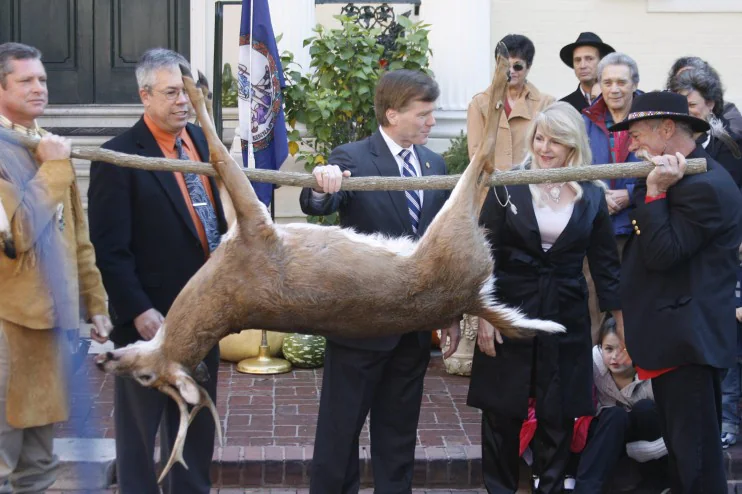 Then-Virginia Gov. Robert F. McDonnell joins the chiefs and members of the Pamunkey and Mattoponi Tribes for the annual Tax Tribute Ceremony at the Executive Mansion in 2010.
Then-Virginia Gov. Robert F. McDonnell joins the chiefs and members of the Pamunkey and Mattoponi Tribes for the annual Tax Tribute Ceremony at the Executive Mansion in 2010.
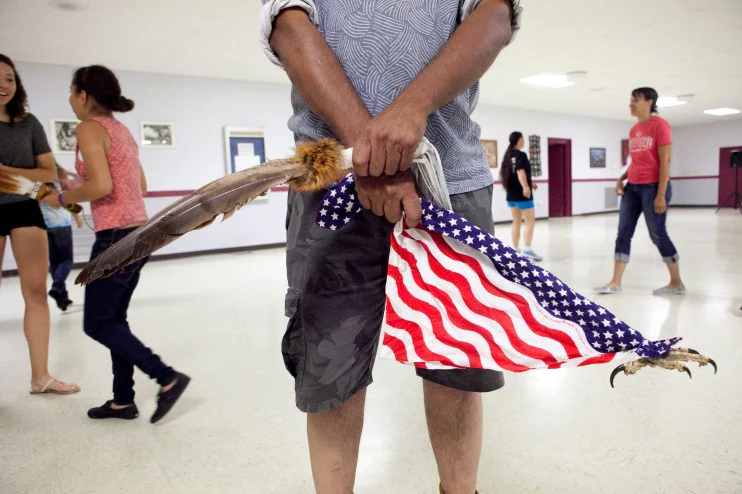 Andrew Tyler, a member of the Cherokee tribe and a 20-year veteran of the U.S. Air Force, poses for a photograph during a break in dancing at the Chickahominy Tribal Center near Providence Forge.
Andrew Tyler, a member of the Cherokee tribe and a 20-year veteran of the U.S. Air Force, poses for a photograph during a break in dancing at the Chickahominy Tribal Center near Providence Forge.
The 208-member Pamunkey tribe has chosen to pursue recognition through the Bureau of Indian Affairs, a laborious and expensive process that has lasted years. The bureau was expected to rule earlier this year on whether to grant the Pamunkey federal recognition. But at the last minute, following a blitz of opposition, that decision was postponed.
Leading the fight against the Pamunkey bid was casino giant MGM, which is opening a $1.2 billion casino in Princes George’s County next year and does not want competition in Virginia. The Pamunkey have not said whether they would open a casino if they were granted recognition, but MGM isn’t waiting to find out. It teamed up with Stand Up for California, an organization that has fought tribal casinos, to oppose Pamunkey recognition.
In March, Stand Up for California wrote to the Bureau of Indian Affairs saying that some members of the tribe descended not from Indians, but African Americans, and therefore should not be recognized. For Virginia Indian tribes and their supporters, it was galling to hear the same argument that Plecker once made now being repeated to again challenge their identity.
“The whole spectacle of folks ganging up on these tribes, in my view just promoted and funded by the casino industry, is just outrageous,” said Kaine, the senator. “They’re building off the back of a horrific eugenicist to try and make their argument.”
MGM officials rejected that characterization. “We object to any depiction that we are in any way associated with the despicable practice” perpetrated by Plecker, said company spokesman Gordon Absher. “MGM Resorts is a national leader in diversity and inclusion. Insinuations to the contrary cannot be further from the truth.”
Kaine and members of both parties in Virginia’s congressional delegation have long supported passage of the Thomasina E. Jordan bill, which would provide federal recognition through Congress for six Virginia tribes: the Chickahominy, Eastern Chickahominy, Monacan, Nansemond, Upper Mattaponi, and Rappahannock. To help win political support, the six tribes gave up the right to open casinos or other gambling ventures.
Kaine says he is encouraged that the bill passed out of the Senate subcommittee early in this legislative session and is hopeful that it will do the same in the House so that it can eventually be voted on by the entire Congress.
For Steve Adkins, the Chickahominy chief, federal recognition would stamp out all of Plecker’s efforts by making a statement: “We are who we say we are.”
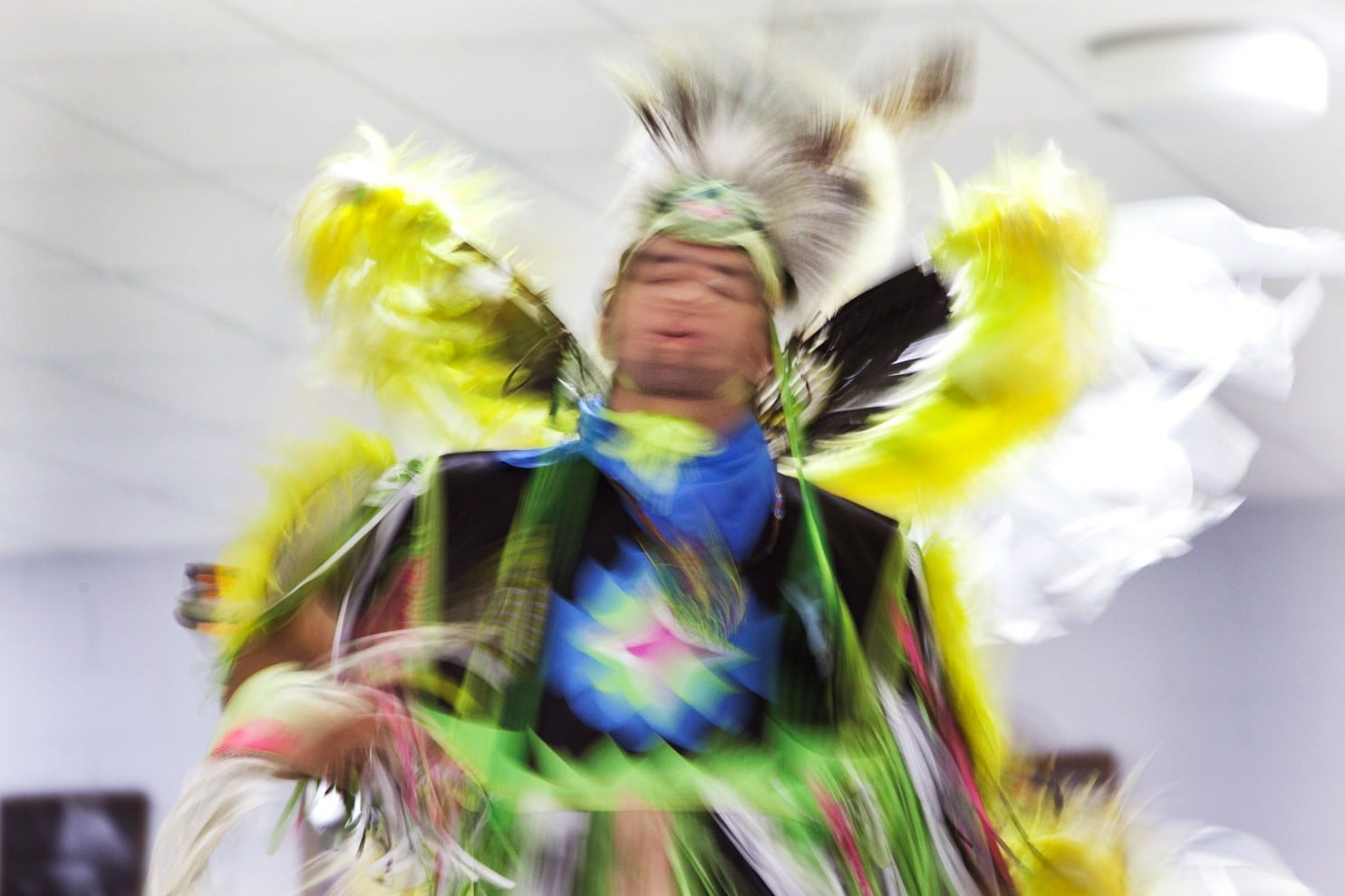
Seth Adkins, a member of Virginia’s Chickahominy Tribe, dances at the Chickahominy Tribal Center near Providence Forge. The tribe hosts a regular meeting to teach the history and culture of Native Americans.
Going home
Powhatan Red Cloud-Owen’s mother, Minnie Adkins, was 25 when the Racial Integrity Act was passed. The idea that she would no longer be considered an Indian in Virginia was so distressing that she and her sister left their tiny hometown and moved to New York. There they took jobs cleaning homes, and Minnie eventually married an Indian from another tribe and settled in Queens. She was proud of being a Chickahominy and would help out at the American Indian Community House, a meeting place for Indians from all over the country who had moved to New York.
Red-Cloud Owen grew up in New York, but he spent his summers in Virginia with his cousins and other members of the tribe. At 15, he moved to Virginia so that he could attend an all-Indian school. He decided to stay for good, but his mother would never return to live in Virginia again. She died in 1974.
Before she died, however, she made a request, Red-Cloud Owen says. She wanted to be buried in the Chickahominy tribal cemetery, next to the tribal center and near the small town where she grew up and knew the name of everyone and every tree. Buried in Virginia. Buried as an Indian.

